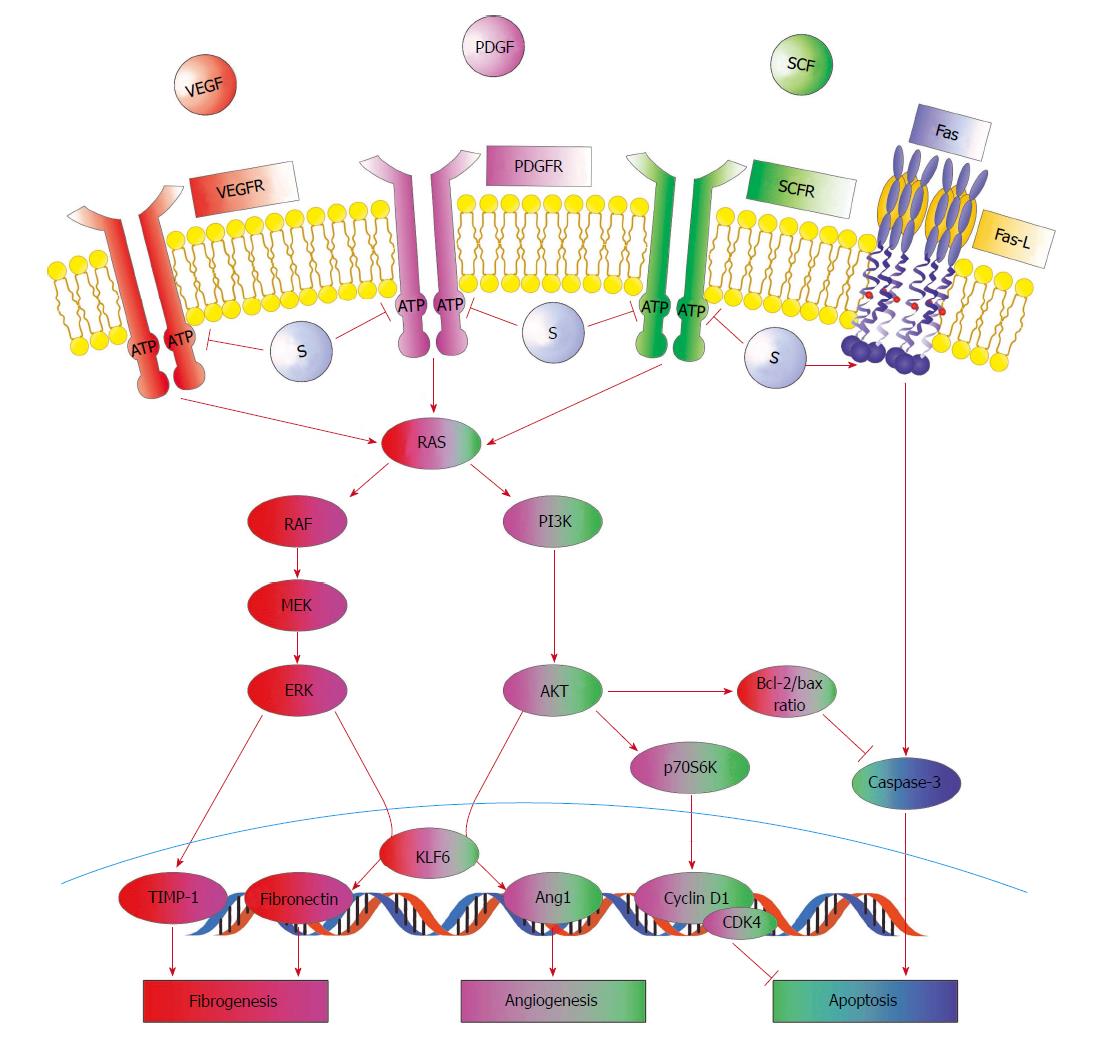Copyright
©The Author(s) 2018.
World J Gastroenterol. Sep 7, 2018; 24(33): 3738-3748
Published online Sep 7, 2018. doi: 10.3748/wjg.v24.i33.3738
Published online Sep 7, 2018. doi: 10.3748/wjg.v24.i33.3738
Figure 2 Positive effects of sorafenib on some pathogenetic pathways of fibrogenesis and angiogenesis in the liver.
Sorafenib (S) blocks the ATP-binding site of the vascular endothelial growth factor receptor (VEGFR), platelet-derived growth factor receptor (PDGFR), and stem cell growth factor receptor (SCFR) tyrosine kinases located on the surface of hepatic stellate cells (HSC), inhibiting the two main cellular pathways of the RAS protein. At the same time, sorafenib increases the expression of Fas and its ligand. This decreases the severity of fibrogenesis and angiogenesis and increases apoptosis, leading to a reduction in hepatic vascular resistance to portal blood flow.
- Citation: Garbuzenko DV, Arefyev NO, Kazachkov EL. Antiangiogenic therapy for portal hypertension in liver cirrhosis: Current progress and perspectives. World J Gastroenterol 2018; 24(33): 3738-3748
- URL: https://www.wjgnet.com/1007-9327/full/v24/i33/3738.htm
- DOI: https://dx.doi.org/10.3748/wjg.v24.i33.3738









